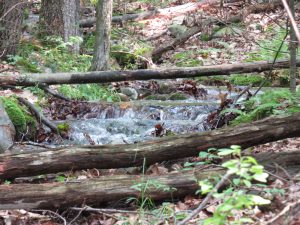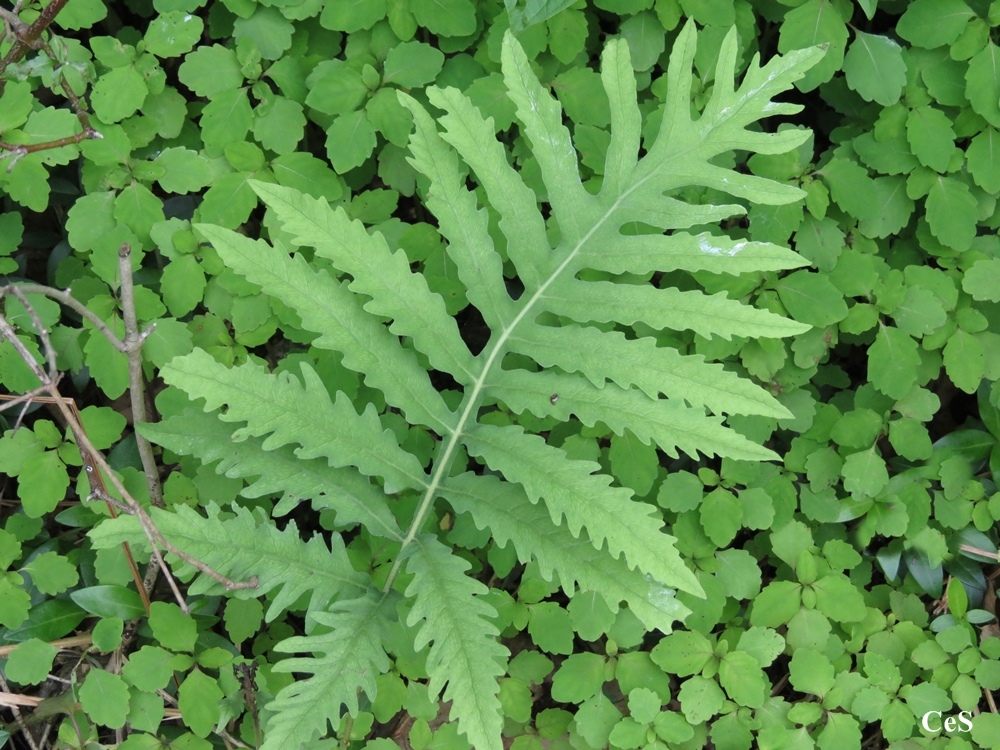 Charlie visited the Weaner Conservation Easement the other day. He commented that, “there were streams in places I’ve never seen a drop of water before.” Yes, it was a wet June in northcentral PA. The airport at Montoursville measured 7.81 inches of rain during the month. The average is just over 4 inches.
Charlie visited the Weaner Conservation Easement the other day. He commented that, “there were streams in places I’ve never seen a drop of water before.” Yes, it was a wet June in northcentral PA. The airport at Montoursville measured 7.81 inches of rain during the month. The average is just over 4 inches.
This made me think of a blog post Allyson Muth wrote in May 2015 about forests being sponges and trees giant straws. Below is an excerpt, and you can read the whole thing by clicking here:
Forest soils are giant sponges. The top layer, the duff layer, is covered in leaves and vegetation that intercept falling water and slow it down – preventing raindrops from hitting the soil and dislocating soil particles to move away, as sediment, in flowing water. Forest soils have lots of macropores (big holes made by worms, insects, dead tree roots, live tree roots) that allow water to move quickly into the ground. And they have micropores (small holes) that hold onto the water and keep it available for plants and animals to use it. Water infiltrates until it saturates the soil or fills the holes completely. It then begins to move through the soil, until it hits bedrock or clay or another surface that it can’t get through. Water then flows sideways downhill until it comes out in streams or gets held in groundwater reservoirs. It takes a long time for water to move through that system. The soil organisms also help filter the water, removing pollutants and excess nutrients that could harm stream life. Many, many urban centers (Boston and New York City, for example) use forested watersheds to provide their clean drinking water with minimal treatment. The forest soils absorb, hold, and filter water, releasing it steadily over time.
At the same time, forests can be thought of as big straws. Trees move a lot of water through their trunks and out their leaves as they photosynthesize and breathe. In the last two weeks, most all of our trees have leafed out (the black walnuts are still breaking bud in our neck of the woods). The giant straw is coming online. Without additional rain, the trees pull that water from the sponge of the soil, which means that stream flow drops. Groundwater will continue to flow into those streams keeping it at base flow levels, but perhaps not as much moisture is passing through the soil. Trees move the water out of the soil and into the atmosphere, contributing to moisture in the air, and hopefully cloud formation that will bring more precipitation and keep us green and vibrant.
Both the giant sponge and big straw are vital to the water cycle and its continuity. As more forests are paved over, as more agricultural lands converted to development, we lose the ability for those soils to work in our favor, keeping streams clean and flowing, providing drinking water, slowing down and absorbing storm water, and ensuring a continuous water cycle from which we benefit, including hot dogs.












